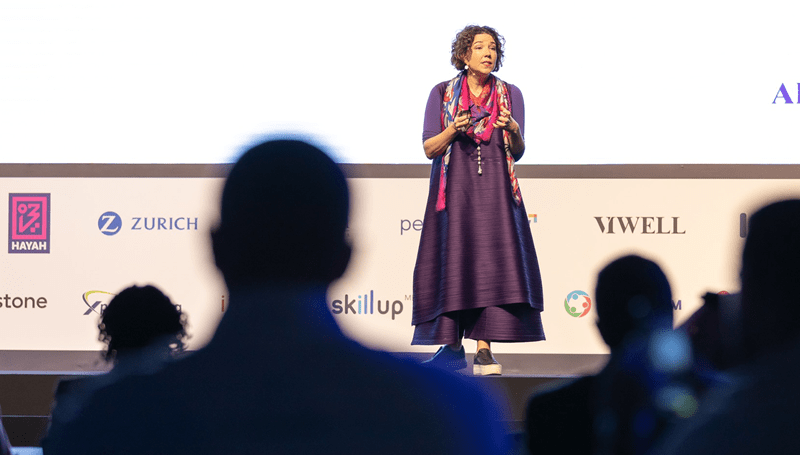
The importance of making the new working model work!
According to a KPMG survey, 65 percent of the surveyed CEOs want everyone back to the office 5 days a week. “Office rewards seniority very well,” said Christine Armstrong, Researcher, Author, Adviser on the Future of Work during her speech at HR Summit & Exhibition.
Armstrong said that she sees six emerging modules: “We will have all these models going forward and organisations need to be very clear on what their models are.”
The six models are: All remote no requirement to be in the office; Work from anywhere (WFA) remove with regular group meetings; Fluid hybrid: choose days in office/remote; Fixed hybrid: Specified days in office; 4 day week 80 percent time, 100 percent pay; 100 percent office traditional model.
Armstrong said that prior to COVID-19 many people were stressed out about how they work and now people have the opportunity to do their work while running their households. “That’s what a lot of people do not understand,” she explained.
“As more people do it, more people want it,” she said, quoting the significance of hybrid and remote work.
“Whatever model you choose, it has to fit with your brand, does it work with what you actually do?” she said.
Armstrong said that they create systems that work with the new environments. “Talents seek continuity,” she said, while understanding the importance of predictability and boundaries.
Which workplace is productive?
There is no correlation between location and productivity but rather by whether they are in the right job, if the employees understand their job and whether or not they feel supported, explained Armstrong. However, despite that leaders do not think their teams are not productive when they work outside the office.
According to a survey conducted in 2016, Armstrong quoted, people reported that they work 2 hours and 50 minutes while spending 26 minutes searching for a new job, 44 minutes checking their social media. These data shows that employees were unhappy with their jobs and unproductive while working at the office.
“This is what we are trying to go back to,” she said.
However, given how leaders do not trust remote working, by spring 2022, the number of meetings per week increased by 153 percent with overlapping meetings, increased by 46 percent per person. There have been declines and tentative RSVPs soared in two years- 84 percent and 216 percent respectively.
According to McKinsey & Company, employees report high rates of burnout and destress symptoms, despite the organisation’s commitment to their mental health and well being. Egypt for example 36 percent of employees reporting burnout, 43 percent are reporting to experience moderate distress and 52 percent of the HR decision makers reporting mental health as top priority.
“The more junior you are, the more overwhelming and stressful this is,” she explained, stressing that employees are stressed by the number of meetings which can be a challenge especially for junior employees to get their work done.
Armstrong explained that the key to ensuring a more productive employee is to ensure their continuous growth and understanding of their work and investment in their learning cycles whether they are junior or senior.